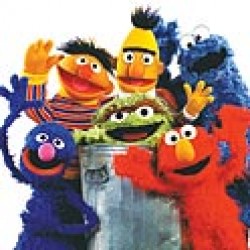What Is Educational Television?
Pop quiz: Is the TV show Hannah Montana educational? If your answer is no, guess again.
The ubiquitous Disney Channel sitcom featuring pop star Miley Cyrus airs during ABC’s Saturday morning block of shows aimed at children. And, believe it or not, it helps the network’s affiliates fulfill their obligation under federal law to air educational and informational (E/I) programming for kids.
Congress first passed legislation in 1990 – the Children’s Television Act – requiring broadcast stations to increase E/I programming, but what followed were some laughable claims of compliance. For example, The Jetsons (shown at right) was labeled educational because it taught children about the future, and stations were sometimes airing educational shows at times when children weren’t likely to be awake and watching. So in 1997, lawmakers revisited the act, putting in place what’s known as the “three-hour rule,” stipulating that the networks air at least three hours of E/I programming for kids per week. Although the rule isn’t enforced unless viewers complain, it is used as a guideline when the Federal Communications Commission reviews a station’s license for renewal.
So have things gotten better? The FCC has acted on complaints, such as when it fined Univision affiliates $24 million for claiming that serial melodramas known as telenovelas were educational. But even under the three-hour rule, broadcasters maintain shows featuring professional athletes, such as NBA Inside Stuff or NFL Under the Helmet, count toward the requirement.
Amy Jordan, who oversees research on children’s media policy for The Annenberg Public Policy Center and has studied implementation of the three-hour rule, says most commercial network programs are prosocial in nature, aimed at teaching children lessons. Hannah Montana falls into that category.
“We actually don’t know the take-away value of those kinds of programming,” Jordan acknowledges. “And that’s an important question, because it speaks to whether or not the broadcasters are living up to the spirit of the Children’s Television Act.”
A study released last fall by advocacy organization Children Now found that only one in eight shows labeled E/I meets the standard of “highly educational.” The majority of the programs studied – a little more than 60 percent – were deemed “moderately educational.” The picture looked better at PBS, where the programming for kids was rated significantly higher than E/I shows on commercial stations.
Another issue is that the E/I label is confusing for many parents, with some mistaking programs such as The Oprah Winfrey Show and Who Wants to Be a Millionaire? as educational.
“In theory, I think parents believe they have a sense of what their kids are exposed to, but in fact, their knowledge is pretty limited,” Jordan says. “So to get parents to direct their children to positive programming … it’s an uphill battle for broadcasters.”
Part of the misunderstanding, she says, results from broadcasters doing little to promote which shows carry the E/I label, thereby keeping parents and their children in the dark about which shows are intended to be educational.
“They have this concern about the spinach syndrome – if children think [a program is] good for them, they won’t watch it,” she says.
J.P.
Published in the Summer 2009 issue


Comments
No comments posted yet.